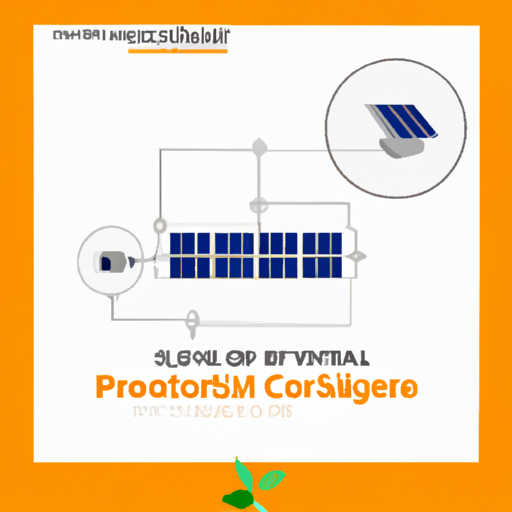Have you ever wondered how to properly size an inverter for your solar installation? Well, look no further because HomeSolarDIY has got you covered! In our upcoming article, we will walk you through the step-by-step process of determining the right size inverter for your specific solar needs.
Whether you’re a seasoned DIY enthusiast or just starting out, our detailed guide will provide you with all the information you need to make informed decisions. From understanding the different types of inverters to calculating your power requirements, we will break it down in a way that is easy to understand and follow. So stay tuned and get ready to take control of your solar installation with confidence and precision! When it comes to sizing an inverter for your solar installation, there are several factors to consider. An inverter is an essential component of a solar power system as it converts the direct current (DC) generated by the solar panels into the alternating current (AC) that is used to power your home.
Understanding the basics of how solar power works is crucial in determining the appropriate size of the inverter for your installation. Solar panels generate DC electricity when sunlight hits the photovoltaic cells. This DC electricity is then sent to the inverter, which converts it into AC electricity that can be used to power your appliances and electrical devices.
The size of the inverter is directly related to the power demand of your household. To determine the appropriate size, you’ll need to calculate your energy consumption and peak power demand. Energy consumption is the amount of electricity your household uses over a period of time, usually measured in kilowatt-hours (kWh). Peak power demand is the maximum amount of power your household requires at any given time, measured in kilowatts (kW).
Calculating your energy consumption involves assessing your past electricity bills and determining the average monthly usage. This will give you an idea of your household’s electricity needs. It’s important to consider future expansion and potential increases in energy consumption when sizing your inverter. If you plan to add more appliances or expand your solar array in the future, it’s wise to choose an inverter that can accommodate these changes.
The type of inverter you choose also affects its sizing. There are different types of inverters available, including string inverters, microinverters, and power optimizers. String inverters are the most common type and are suitable for most residential installations. Microinverters are installed on each individual solar panel and offer better performance in situations where shading or panel orientation is an issue. Power optimizers are used in systems with shading or multiple orientations and work in conjunction with string inverters.
Factors such as solar panel configuration, shading, orientation, temperature, and climate also impact the sizing of the inverter. The number of solar panels, the arrangement (series or parallel), and any shading from surrounding objects or vegetation can affect the voltage and current produced by the panels. Orientation and temperature affect the panel’s efficiency and output, which in turn affects the load on the inverter.
To calculate the sizing of an inverter, you need to consider its AC power rating and DC power rating. The AC power rating refers to the amount of power the inverter can supply continuously. The DC power rating represents the maximum power the inverter can handle from the solar panels. Inrush and surge power are also essential considerations, as some electrical devices require an initial surge of power to start up.
Inverter efficiency is another crucial factor to consider. Inverters have a certain efficiency rating, which indicates how much of the DC power from the solar panels can be converted into usable AC power. Higher efficiency inverters are generally more expensive but can lead to greater overall system efficiency and cost savings in the long run.
When it comes to grid-tied systems, it’s essential to size the inverter to match the utility requirements. This ensures that excess energy produced by your solar panels can be fed back into the grid, allowing you to earn credits or receive compensation for the electricity you generate. Monitoring and control features, as well as anti-islanding protections, are also important considerations for grid-tied systems.
In off-grid systems, where there is no connection to the utility grid, the inverter needs to be sized for peak loads. This involves considering the maximum power required by your household during periods of high demand, such as running multiple appliances simultaneously. Additionally, off-grid systems require an inverter that can handle battery charging and discharging effectively, as well as provide backup power when needed.
Fortunately, there are several tools available to help with inverter sizing. Online calculators and system design software can provide estimates based on your energy consumption and other parameters. However, it’s always recommended to consult with solar professionals who can assess your specific situation and provide tailored advice.
Once you have determined the appropriate size for your inverter, proper installation is crucial for optimal performance and longevity. Following installation guidelines and best practices ensures that your inverter operates efficiently and reliably. Monitoring and troubleshooting your system regularly can help identify any issues or inefficiencies. Regular maintenance, such as cleaning the solar panels and checking connections, is also essential in keeping your solar installation running smoothly.
In conclusion, correctly sizing your inverter is crucial for maximizing the performance and efficiency of your solar installation. By considering factors such as energy consumption, peak power demand, solar panel configuration, and inverter efficiency, you can ensure that your inverter meets the needs of your household now and in the future. Whether you’re considering a grid-tied or off-grid system, consulting with solar professionals and utilizing sizing tools can help you make informed decisions. By taking these steps, you’re not only harnessing the power of the sun but also taking a significant step towards a more sustainable future.


